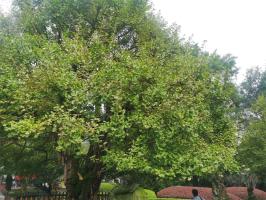Introduction
Carbon dioxide (CO2) is a greenhouse gas that contributes to global warming, and it is the most important anthropogenic contributor to climate change. While we tend to think of CO2 emissions as coming mainly from fossil fuel combustion, trees and plants also play an important role in the atmospheric carbon cycle. In this article, we will investigate what percentage of CO2 comes from trees and plants.
The role of trees and plants in the carbon cycle
Trees and plants are natural carbon sinks because they absorb CO2 from the atmosphere during photosynthesis. Photosynthesis is the process by which plants use sunlight to convert carbon dioxide and water into glucose and oxygen. The carbon in glucose is then used to build the plant's biomass. As a result, trees and plants help to remove CO2 from the atmosphere, storing it in their tissues and roots. A mature tree can absorb around 48 pounds of CO2 per year.
The contribution of trees and plants to global CO2 emissions
Despite their role as carbon sinks, trees and plants also contribute to global CO2 emissions. When trees and plants decompose, or when they are burned or cut down, the carbon they had previously captured is released back into the atmosphere. The amount of CO2 released by deforestation and forest degradation is estimated to be around 10% of global greenhouse gas emissions, and this percentage is expected to increase with the accelerated destruction of the world's forests.
Other sources of CO2 emissions
While trees and plants are an important source of CO2 emissions, they are not the only ones. Human activities such as burning fossil fuels for energy and transportation, industrial processes, and livestock farming are responsible for much of the CO2 emissions that contribute to global warming. In fact, according to the United Nations, greenhouse gas emissions from human activities have risen by 70% since 1970.
Conclusion
Trees and plants play a vital role in the carbon cycle and in the fight against climate change, but they are also a source of CO2 emissions when they are degraded or destroyed. As we work to reduce global greenhouse gas emissions, we must pay attention to the health and vitality of our planet's forests and natural spaces. By protecting and restoring these vital ecosystems, we can help to slow the pace of climate change and create a healthier, more sustainable future for all.

 how many times do yo...
how many times do yo... how many planted tre...
how many planted tre... how many pine trees ...
how many pine trees ... how many pecan trees...
how many pecan trees... how many plants comp...
how many plants comp... how many plants can ...
how many plants can ... how many plants and ...
how many plants and ... how many pepper plan...
how many pepper plan...































